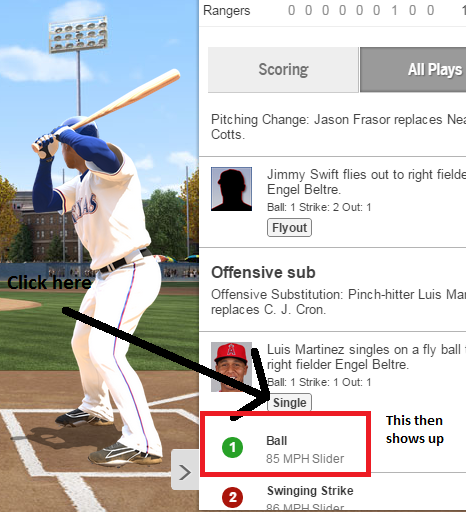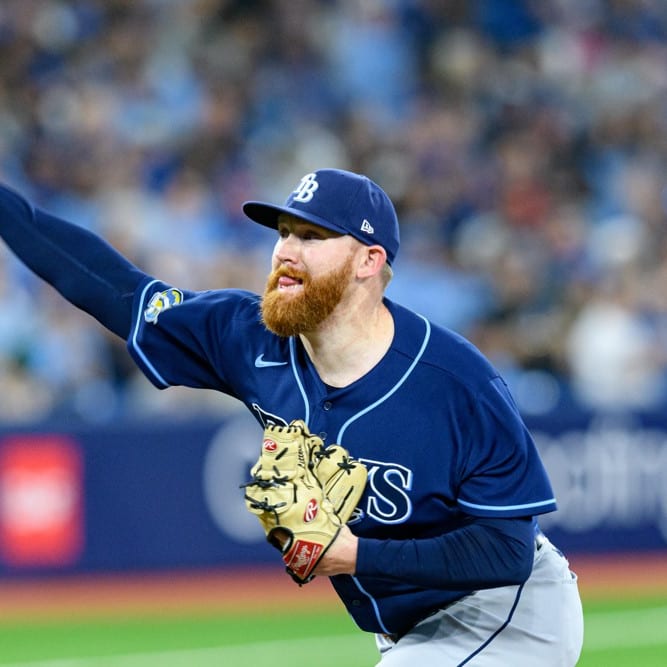This article is part of our The Saber's Edge series.
Spring training is finally getting started. For fantasy owners, it is time to get that last bit of information for drafts and auctions. Fantasy baseball experts everywhere, including here at RotoWire, worked all winter to examine data and offer scenarios/projections/guesses on how players will perform this season. While this information is useful, every owner in your league has access to it as well. To get a final edge on your fellow owners, you need to glean information from spring training. Here is a look at some important spring-training information to use and how to get it.
Fastball Velocity
Fastball velocity should be hunted for during spring training for several reasons. In a previous RotoWire article, I outlined five key points to remember when velocity declines:
1. Fastball velocity changes can be taken seriously with a minuscule sample size.
2. All pitchers will lose velocity. Be concerned if a pitcher sees a decline of more than 1.0 mph.
3. A 1.0 mph drop in velocity means a 1.1 percent drop in K% for starters and a 1.9 percent decline for relievers.
4. A 1.0 mph drop in velocity means a 0.28 point increase in ERA for starters and 0.45 increase for relievers.
5. When looking at velocity changes, make sure to check if the pitcher is moving from one role to another. Also, make sure their fastball pitch mix hasn't changed.
Additionally, I have found it is rare to regain velocity once it is lost. For pitchers who lose
Spring training is finally getting started. For fantasy owners, it is time to get that last bit of information for drafts and auctions. Fantasy baseball experts everywhere, including here at RotoWire, worked all winter to examine data and offer scenarios/projections/guesses on how players will perform this season. While this information is useful, every owner in your league has access to it as well. To get a final edge on your fellow owners, you need to glean information from spring training. Here is a look at some important spring-training information to use and how to get it.
Fastball Velocity
Fastball velocity should be hunted for during spring training for several reasons. In a previous RotoWire article, I outlined five key points to remember when velocity declines:
1. Fastball velocity changes can be taken seriously with a minuscule sample size.
2. All pitchers will lose velocity. Be concerned if a pitcher sees a decline of more than 1.0 mph.
3. A 1.0 mph drop in velocity means a 1.1 percent drop in K% for starters and a 1.9 percent decline for relievers.
4. A 1.0 mph drop in velocity means a 0.28 point increase in ERA for starters and 0.45 increase for relievers.
5. When looking at velocity changes, make sure to check if the pitcher is moving from one role to another. Also, make sure their fastball pitch mix hasn't changed.
Additionally, I have found it is rare to regain velocity once it is lost. For pitchers who lose more than 2 mph they would only see a 0.5 mph increase the next season. If a pitcher saw a 1.0 to 1.4 mph drop, they would see no velocity increase the next season. Velocity rarely goes up.
Finally, spring-training velocities correlate to regular-season velocities. Pitchers only throw one way, hard. They are trying to immediately get up to speed in spring training to increase endurance. Mike Fast at Baseball Prospectus found the following with spring-training velocities:
"There is definitely a predictive relationship between the fastball speed change observed in spring training and the fastball speed change observed in the regular season."
Now, some pitchers do need to get up to full speed, and he found velocities to be -0.6 mph less than the regular season. A person may see some drop, but this is not a reason to ignore the values. Keep track of the value and see if the pitcher picks up speed in his next outing.
In 2013, I noticed Alexi Ogandolost nearly 3 mph off his fastball and had some other injury concerns. Since then, he has had four DL trips hasn't been the same pitcher. Also, Roy Halladay's 2013 spring training velocity was down around 86 mph, and he was basically done in the league.
Now, moving on to finding these velocity readings. If the pitcher is on the Royals, Mariners, Rangers or Brewers, the velocity readings are easy to find. Each of these teams have a Pitchf/x system installed in their home ballpark (Royals and Rangers in Surprise and Brewers and Mariners in Peoria). The speeds are immediately available on MLB Gameday as seen here:

Additionally, Brooksbaseball.net will add all the values to each player after the game.
The main problem with getting Pitchf/x velocities this way is being limited to the four teams listed above and their Cactus League opponents. For Grapefruit League parks, the search is a little tougher, but it just requires a little searching on Twitter. I can just about find the velocity for any major pitcher by searching with the player's name and "mph" and/or "fastball."
For example, Clay Buchholz threw Tuesday for the Red Sox. The top tweet for "Buchholz mph" is the following:
Clay Buchholz threw 90-91 mph in is one innnig while Rick Porcello has been 92-93 mph in his first of two innings of work.
— Nick Cafardo (@nickcafardo) March 3, 2015I got the bonus plan with Buchholz and Rick Porcello both showing up. Looking at their previous season average velocity, Buchholz (91.6 mph) is down a tad while Porcello (90.4 mph) is up. I don't trust the Twitter speeds as much as Pitchf/x, but they are better than not knowing anything.
Injuries
Some players had injuries fixed this offseason. Pitch velocity is one of the best ways to check on pitchers. For hitters, the lingering effects are a little harder to find. One way to check on hitters with a leg or core injury is to time their sprint speeds to first base. If the hitter has lost a few steps he might still not be able to go 100 percent because of the injury.
There really aren't any good sources for times to first yet, but I am working on it. An owner might need to find and time runs himself. The best way to find sprints is to watch when the player hits into a double play or gets an infield hit. The player is usually giving it their all in those situations. This may take a few minutes, but I bet you will be the only one with the information, such as if Shin-Soo Choo is over his ankle injury.
For example, Ben Revere had offseason ankle surgery. For a player whose value is dependent on his speed, this value is important to check. I went back to early 2014 (hopefully when Revere wasn't hurt) and timed him at 4.25 to first. On Tuesday, he was able to best that speed.
Ben Revere#time2first at 4.05s today. 75 grate. Looks like his ankle is healthy
— Jeff Zimmerman (@jeffwzimmerman) March 4, 2015I don't see a reason for his ankle to still be bothering him. Draft away.
Beside foot speed, there is the visual medical aid check. Last spring, Ryan Braun said everything was fine, but his thumb was all taped up. If it didn't bother him, it wouldn't have been taped. His thumb continue to bother him, and he eventually needed offseason surgery. I will be looking at his thumb again this year.
Quality of New Pitches
Our own Jason Collete tracks pitchers who add new pitches in spring training. While he usually checks out the results later in the year, an owner can watch some spring training games to see if the pitch is working now. Is the pitcher throwing it during a game? Can he throw it for strikes? Do hitters swing-and-miss at it?
The one name which jumps off Collete's list this year is Tyson Ross. He is basically a fastball/slider guy, and a third pitch would be huge for him. Watch one of his starts to see if the pitch works or if it's always headed to the backstop.
Lineup order
Lineup position is huge for the value of some players. A speedster moving from the No. 1 spot to dreaded No. 8 on an NL team will see his stolen bases plummet because the pitcher is batting next. This same player will also see his plate appearances drop by 126. Each spot down the lineup costs a hitter 18 plate appearances over an entire season.
It is tough to get a perfect read on each team, but some clues exist. For example, Royals manager Ned Yost said Alcides Escobar likely will lead off. From the same article, the No. 2 spot is up for grabs with Alex Rios, Omar Infante and Lorenzo Cain in the mix. Besides the top positions under discussion, it seems Alex Gordon will bat either fifth or sixth. This is a decent hit to his value because of the drop in plate appearances.
Conclusion
Most of the time, spring training stats are useless or are just such a small sample that they don't matter. Some useful information can be taken from spring training, though. Pitch speed, new pitches, player speed and lineup order are few items to look for to get a head up on your competition. Most of the work for drafts and auctions is done. Now it is time to make the final adjustments.










